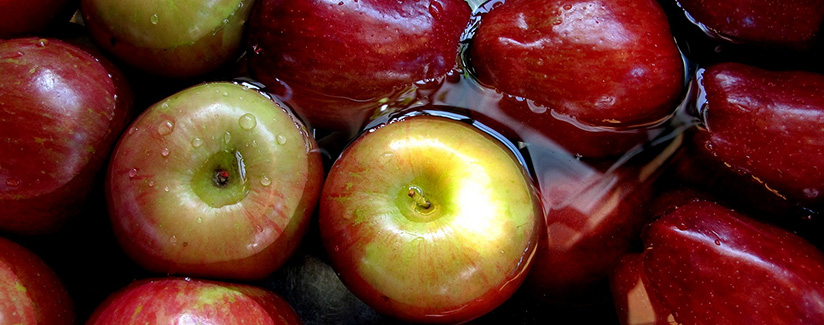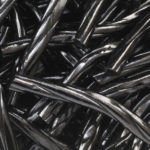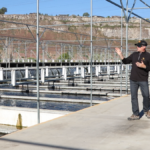
Should I Wash Fresh Fruit in Vinegar?
09/26/2018
Should you wash fresh fruit in vinegar? Does vinegar remove bacteria from fruits and vegetables? A Facebook post says a good way to clean fruit is to fill a sink with water, add 1 cup of vinegar and stir. The post advises soaking the fruit for 10 minutes and it will sparkle with no wax or white, dirty film. It also claims this will also make produce last longer.
We’ve received many questions about this at Best Food Facts, so we went to the experts. Dr. Floyd Woods and Dr. Joe Kemble, who are both horticulture professors at Auburn University, answered our questions about washing produce in vinegar.
What we learned: Yes, it is safe to soak fruits and vegetables in vinegar. Using a solution that’s three parts water and one part vinegar will be most effective at removing bacteria. If soaking fruit in the sink, be sure to clean the sink first and make sure you’re using enough vinegar to meet the three-to-one ratio. Using vinegar, however, is not necessary because simply washing fruits and vegetables with clean water will remove 98 percent of bacteria. Also, a vinegar soak will not extend the shelf life of fruits and vegetables.
Is it safe to use vinegar or acetic acid to clean produce?
Dr. Woods and Dr. Kemble: “Vinegar or acetic acid is safe to use as a home remedy to clean, sanitize or surface sterilize a variety of fresh fruits and vegetables. However, the extent and effectiveness of sanitation by using vinegar will depend on the nature of the suspected disease-causing agents. In other words, fungi and bacteria can be effectively removed from these fresh products by using vinegar, but the effectiveness of the vinegar depends on which bacterium and/or fungus is on (or suspected to be on) the fruit or vegetable, the concentration of the vinegar, the temperature of the water and the amount of time the produce is exposed to the vinegar.”
How much vinegar should be used?
Dr. Woods and Dr. Kemble: “Research has shown that a ratio of three parts water to one part vinegar is most effective. From the photo on Facebook, one cup of vinegar in a sink would not have been enough vinegar to make a difference. Don’t forget to clean your sink before you soak and clean any of your produce. A soak of five to 10 minutes should be sufficient. Try to get the water temperature as close to that of the fruit or vegetable that you wish to clean. When you have a variety of fruits and vegetables, it might be best to wash these separately.”
Is household vinegar effective to remove bacteria?
Dr. Woods and Dr. Kemble: “The concentration of vinegar that you purchase at the store is lower than most of the commercial formulations designed to sanitize or surface sterilize fresh fruits and vegetables. If you are in doubt as to what to do, your best course of action is to use one of the commercial preparations such as Tsunami (peroxyacetic acid-based sanitizer). Tsunami contains a cousin to acetic acid called peroxyacetic acid and has been used effectively for many years to control post-harvest microorganisms. Since you are not likely to know which microorganisms are on your produce, your safest course of action is to treat for the worst-case scenario (which most commercial products do).”
Is it okay to use plain water to clean produce?
Dr. Woods and Dr. Kemble: “When it comes down to making an informed choice as to what you should use to clean off fruits and vegetables, research has shown that using just plain old water can remove 98 percent of the bacteria when it is used to rinse and soak produce. Simply washing produce will remove any bacteria or other residues on your produce.”
“Before using any agent to clean, sanitize, or surface sterilize any fruits or vegetables, it is important to remove any soil or debris that might be on the produce. Any organic matter or soil present in the solution will decrease the efficacy of the active ingredient – acetic acid or peroxyacetic acid from the examples above.”
Will washing produce such as fresh fruit in vinegar make it last longer?
Dr. Woods and Dr. Kemble: As to the extent that vinegar or another similar treatment will prolong post-harvest life of various fruits and vegetables, it depends on the specific fruit or vegetable. Each fruit and vegetable has its own shelf-life, which can differ from a few days after it is harvested to one or two weeks. It can be months for many winter squashes, Irish potatoes, pears, apples and root crops. It depends on how the produce is treated after it is harvested. If this is produce that you purchased from a supermarket or farmers market, you might not be able to do much to extend its shelf-life unless you know when it was picked and how it has been stored”
For more information on ideal storage conditions and methods of cooling your home-grown produce, check out University of Nebraska-Lincoln Extension.
What about storing and cooling produce from your own garden?
Dr. Woods and Dr. Kemble: “If you cool the produce from your garden correctly, then you will extend its shelf-life. For example, if you are going to cool and sanitize your tomatoes you will need to do more than simply run the fruit under cold tap water. In fact, that is the worst thing you can do. You will need to dip or soak your tomatoes in water that is the temperature of the tomatoes that you just picked. So, if it is 85°F outside, the internal temperature of your fruit will be about 85°F. When preparing your cleaning solution, the water must be at the same temperature as the tomato. We realize that this seems odd, but if the water is cooler than the fruit the drastic change in temperature will cause the tomato to actually draw in or suck in through its pores water that surrounds it. It is a great way to get microorganisms into your fruit that will ultimately cause a fruit rot. After you clean and sanitize your fruit, place them in a cool area somewhere around 55°F. With tomatoes, never place them in your refrigerator. It is too cold in there! Most refrigerators are set around 35°F to 45°F, which is too cold to store tomatoes and many other vegetables such as summer squash, bell peppers and eggplants.”
So how should you store fruits and vegetables?
Dr. Woods and Dr. Kemble: “Most fruits (oranges, lemons, etc.) and vegetables (tomatoes, peppers, eggplants, cucumbers, watermelons, etc.) of tropical and subtropical origin may be damaged by cool temperatures and develop a condition called chilling injury. Chilling injury results from prolonged exposure to low but not freezing temperatures. Symptoms of chilling injury include dark circular pits on the surface, shriveling, internal darkening, loss of the ability to ripen and the development of off-flavor and poor texture. Proper storage will help achieve a maximum post-harvest life.”
“In the case of strawberries, blueberries and other berries, generally any wetting or direct contact with water is detrimental and will shorten their shelf-life. You should never place any of these into your sink to soak them. Before you store them, be sure that they are clean but do not wash them until you are ready to use them. Strawberries, blackberries, blueberries and raspberries are natives of temperate climate and can be stored in your refrigerator. In fact, they should be stored as close to 32°F as possible to maintain their shelf-life. When stored properly, strawberries have a shelf-life of a week, blueberries can last up to two weeks and blackberries and raspberries will last two to four days.”
Washing fruit and vegetables in vinegar is a good way to remove potential bacteria. Use a solution of three parts water and one part vinegar. Plain water is also effective at removing most bacteria. Vinegar will not make produce last longer. Chill or store at proper temperature to help fruit last as long as possible.
Originally published July 17, 2013.
“floating apples” by frankieleon is licensed under CC BY SA.


























